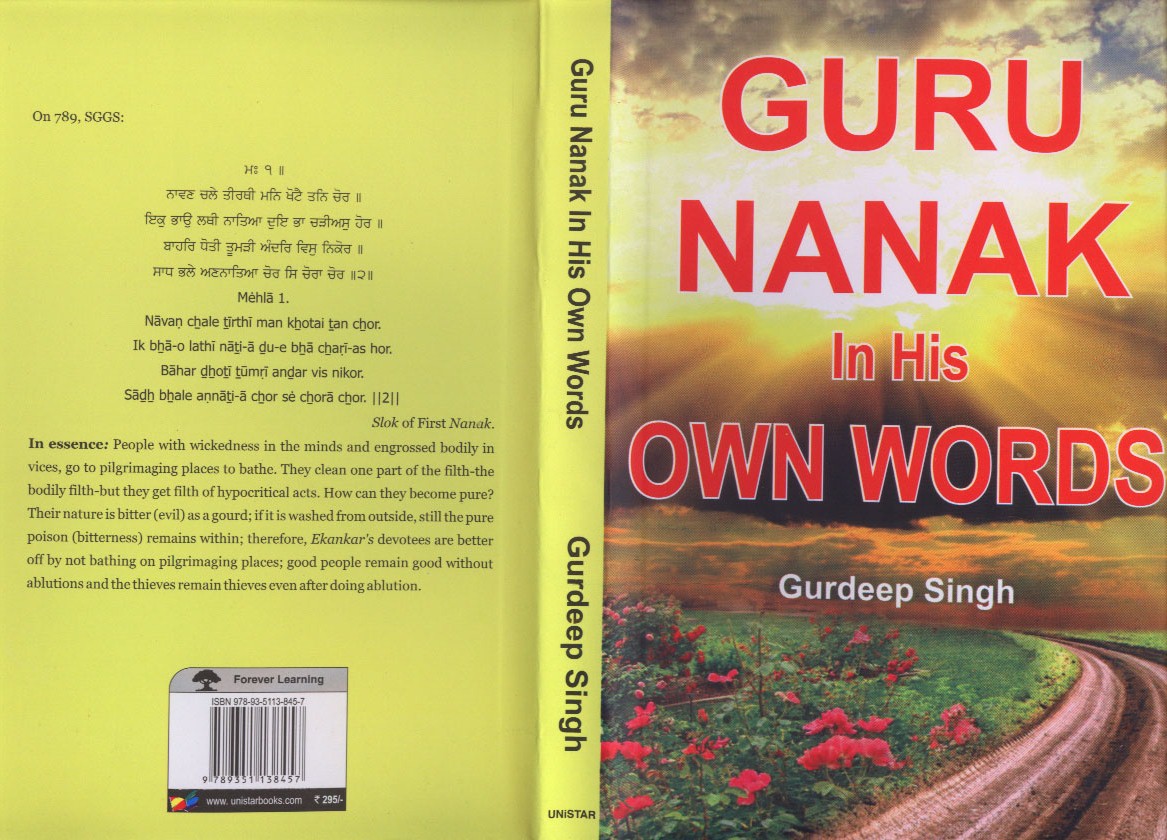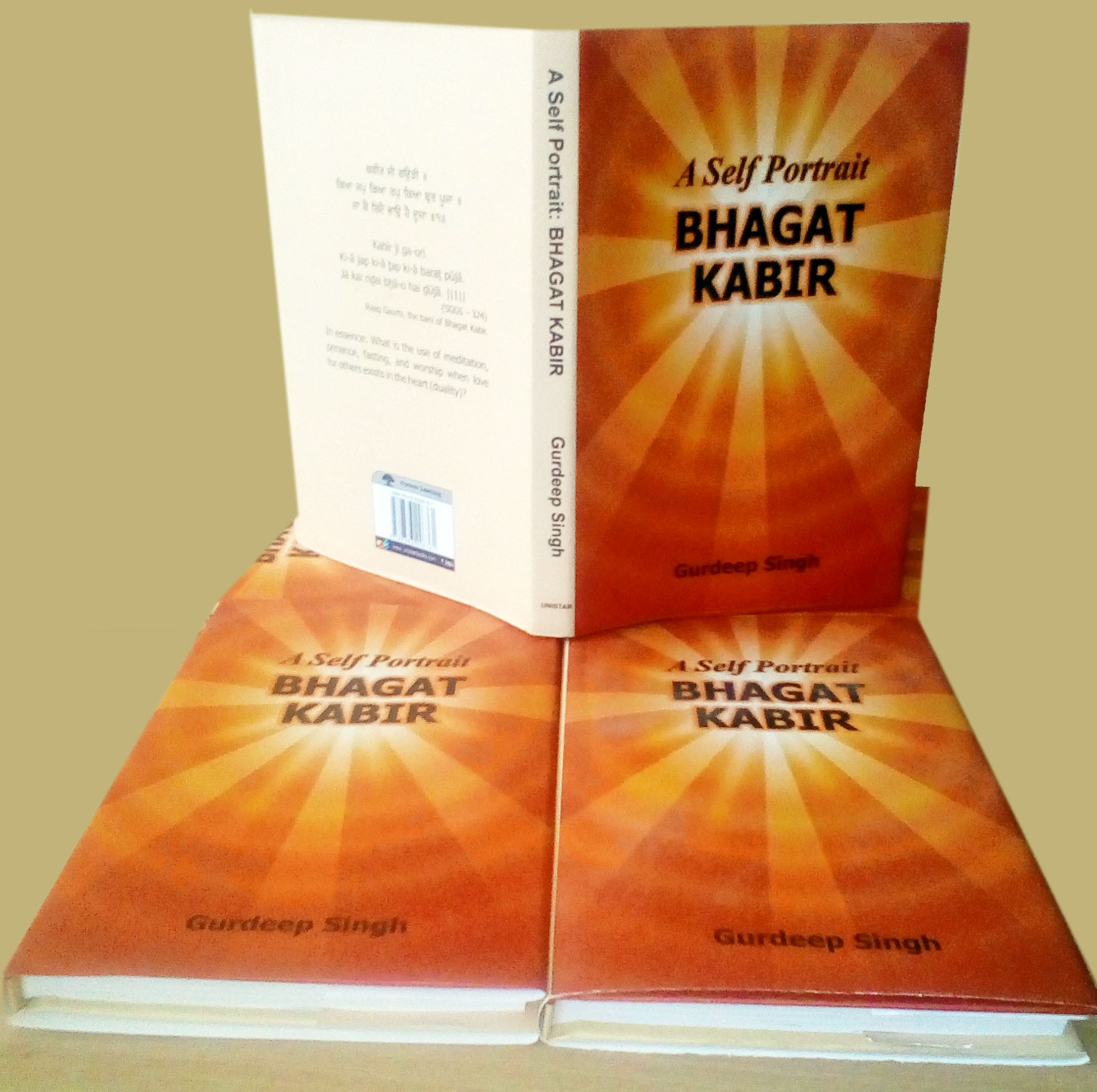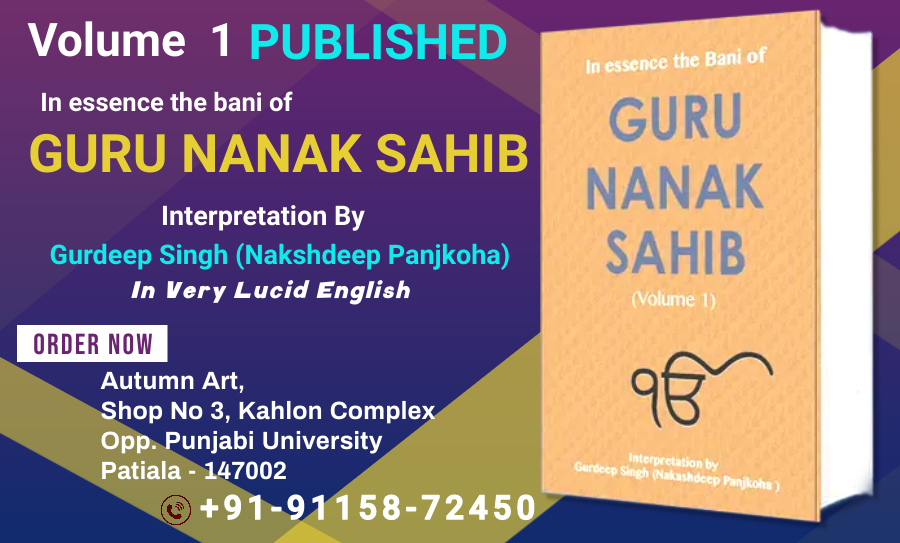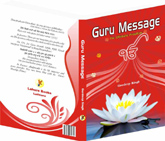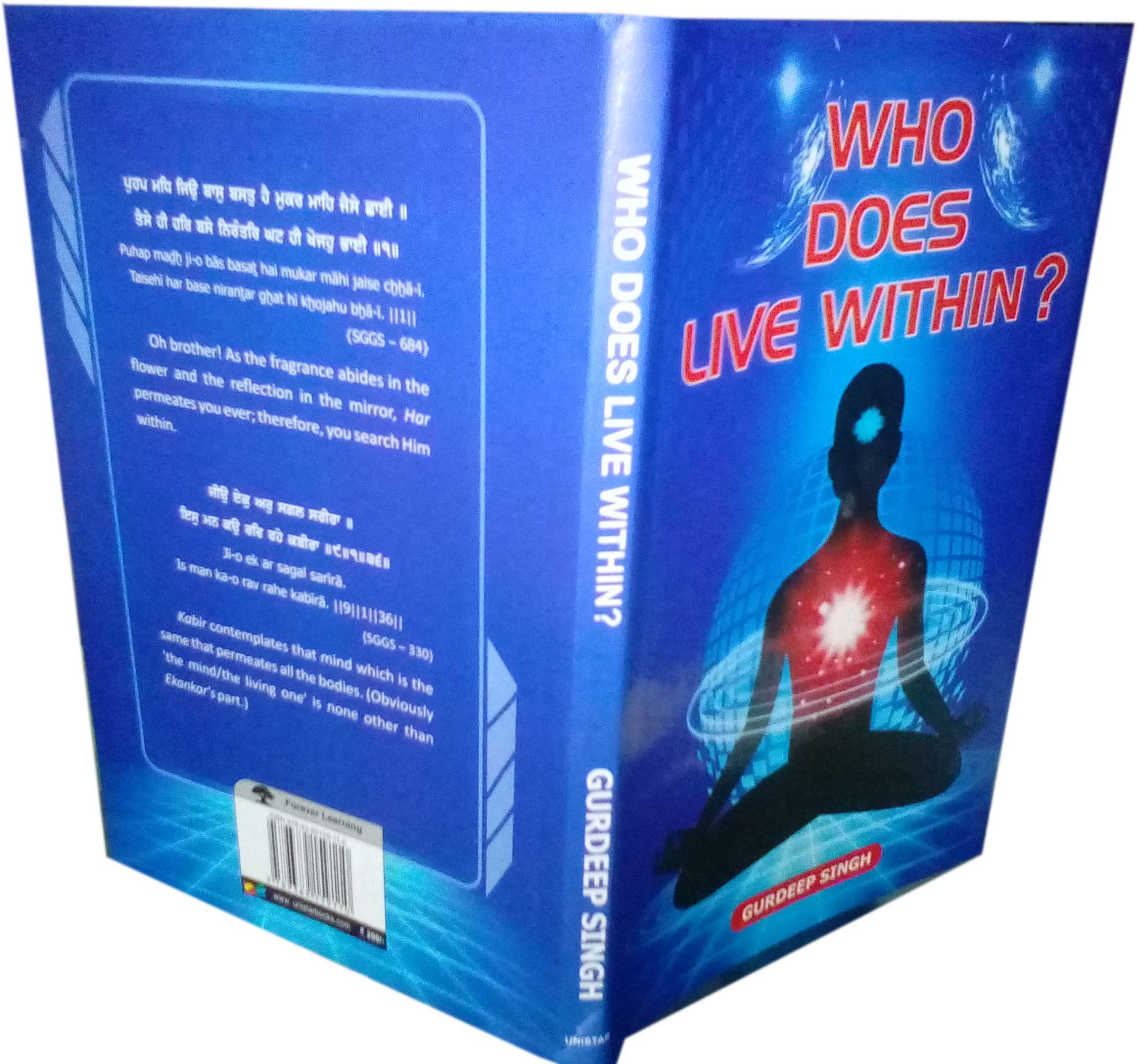If we, the Sikhs, don’t understand Mool Mantra (A prelude To Jap Ji), we know nothing about Sikhi; without understanding the concept of the Creator in “Mool Mantra”, we simply build our mansion of knowledge on stories told over times by those who were more interested in pursuit of their own quest than understanding fully the goal of our Gurus, or we are indulging in implying ideas of our own limits to every word used in Mool Mantra; if so, we often forget that every word used in Mool Mantra is elaborated in Sri Guru Granth in detail with examples ( Please check on 33,SGGS, 54 ,SGGS, 73,SGGS,78,SGGS,108,SGGS,391,SGGS,720,SGGS 748,SGGS, 930 SGGS, 931,SGGS,1385,SGGS and1412 SGGS); we cannot imply our own thought for which the words used in Mool Mantra do not stand. First Nanak introduces to us the Creator he has adored, praised and realized; his goal is to take the followers away from prevailed misconceptions about Him and to lead them directly to Him who, even being Formless and Invisible, keeps His presence in all. Through Many shabdas it is made clear that indeed, He is ikkonakaar which means “One All Pervading:; in other words, He is present very much within all (Please check for references on 11. SGGS, 25 SGGS, 33 SGGS, 47 SGGS, 56 SGGS, 128 SGGS, 152 SGGS, 181 SGGS,and 342 SGGS).
It is commonplace practice of defining “ ੴ / Ikk Onakaar” as a new and complete description of “OM” in some Sikh circles, but It is not true if we look at its description in entire Sri Guru Granth Sahib. First Nanak elaborates it further through the words that follow it. From where he has taken the word “ਓ” is very clear from its own form; it is not found “as it is” in any ancient scriptures of India. While reading Upanishad and Simirtis, we come across a word “Aum” used for “Atam”; in Mandukya Upanishad (1-12), it is stated, “ Aum”, this is an eternal word. It symbolizes” what was, what is, and what shall be”. It also represents what is beyond the present and beyond the future”. Interestingly this concept keeps changing though, please read on: “God is all and the soul is God. The soul has four conditions. First condition is wakefulness, when the senses are turned outwards focusing on external world. The second condition is dreaming, when the senses are turned inwards focusing on past deeds and present desires. The third condition is dreamless sleep when desires are resting. The fourth condition is purity. The senses are neither turned outwards nor inwards; there is neither wakefulness nor dreaming. This condition is supreme consciousness, when there is complete awareness of the Soul. This fourth condition is expressed by the syllable “Aum”. This Upanishad calls the soul God but it also expresses “Aum” not as God but a Syllable that represents fourth condition of the soul. After reading that sometimes, the words like “Aum”, “Soul or Supreme Soul” and “God” appear to be conveying meaning of the Creator, but sometimes they appear to give different meanings, for example: God is all and the soul is God” as stated above, but look at this another example, “ by means of the soul, all living beings can know God; and this knowledge fills them with joy … “ Taittiriya Upanishad 2-6, 7. If through a soul, God is known; obviously, it appears that God is separate from the soul; by reading this, the mind certainly get confused about the concept God and the soul. In Rig Veda, Aum is expressed as divine syllable, the sustainer of the world:
“The four quarters of the sky, reach down to the oceans on the edge of the universe, and from there, the waters flow, the whole universe is sustained by the divine syllable, Aum, which flows everywhere” Rig Veda 1:164-4, 45-46,51-52
Later on in Rig Veda it is stated that God is one with many names but wise men know that He is one. No wonder, the Guru refers to such thought in Veda in Gurbani by saying that what the reality is expressed in Veda, they don’t believe but they follow later on sages who led them to idol worshiping ( Please check on 919 SGGS, 556 SGGS). Well, that is not topic of this article; therefore, let us see How the Guru expresses the Creator in His full concept.
The Guru differs slightly with Upanishad and Vedas; the soul is not God but a part of God because God or Ikkoankar is also separate from the soul though it exists in beings like the butter in the milk. On 966, Mehla 5:
ਆਪੇ ਸਭਨਾ ਮੰਝਿ ਆਪੇ ਬਾਹਰਾ ॥
Āpe sabẖnā manjẖ āpe bāhrā.
In Essence: He is within all and He Himself is beyond all.
There is very interesting statement in “Isa Upanishad “
“God travels and yet he does not, He is far away and yet He is near. He is in all beings, yet He is outside all beings”
It adds:
“Those, who find God within themselves, and find God in others, lose all fear; those, who are at one with all beings, and discern the unity of all beings, lose all sorrows.
Isa Upnishda 1-2,4-8
This is very closest statement to Gurbani in context of the Ikkoankaar. Interestingly, the soul is treated as one entity pervading in all in Upanishad, but Gurbani takes it further by separating the Creator completely from His Creation (555, SGGS):
ਪਉੜੀ ॥ ਆਪੇ ਸਭ ਘਟ ਅੰਦਰੇ ਆਪੇ ਹੀ ਬਾਹਰਿ ॥
ਆਪੇ ਗੁਪਤੁ ਵਰਤਦਾ ਆਪੇ ਹੀ ਜਾਹਰਿ ॥
ਜੁਗ ਛਤੀਹ ਗੁਬਾਰੁ ਕਰਿ ਵਰਤਿਆ ਸੁੰਨਾਹਰਿ ॥
ਓਥੈ ਵੇਦ ਪੁਰਾਨ ਨ ਸਾਸਤਾ ਆਪੇ ਹਰਿ ਨਰਹਰਿ ॥
ਬੈਠਾ ਤਾੜੀ ਲਾਇ ਆਪਿ ਸਭ ਦੂ ਹੀ ਬਾਹਰਿ ॥
ਆਪਣੀ ਮਿਤਿ ਆਪਿ ਜਾਣਦਾ ਆਪੇ ਹੀ ਗਉਹਰੁ ॥੧੮॥
Pa▫oṛī. Āpe sabẖ gẖat anḏre āpe hī bāhar.
Āpe gupaṯ varaṯḏā āpe hī jāhar.
Jug cẖẖaṯīh gubār kar varṯi▫ā sunnāhar.
Othai veḏ purān na sāsṯā āpe har narhar.
Baiṯẖā ṯāṛī lā▫e āp sabẖ ḏū hī bāhar.
Āpṇī miṯ āp jāṇḏā āpe hī ga▫uhar. ||18||
Stanza.
In Essence: Prabh Himself is within all but He is also outside. He prevails hidden and He Himself is manifest. For thirty six ages, He prevailed by Himself in pitch darkness. During that time, there were no Puranas and Shastras but Akalpurakh by Himself. Prabh is sitting in a trance separate from all. Prabh knows His limits though He is unfathomable ocean.
In context of Onakaar, let us read First Nanak on 929 SGGS:
ਓਅੰਕਾਰਿ ਬ੍ਰਹਮਾ ਉਤਪਤਿ ॥ ਓਅੰਕਾਰੁ ਕੀਆ ਜਿਨਿ ਚਿਤਿ ॥
ਓਅੰਕਾਰਿ ਸੈਲ ਜੁਗ ਭਏ ॥ ਓਅੰਕਾਰਿ ਬੇਦ ਨਿਰਮਏ ॥
ਓਅੰਕਾਰਿ ਸਬਦਿ ਉਧਰੇ ॥ ਓਅੰਕਾਰਿ ਗੁਰਮੁਖਿ ਤਰੇ ॥
ਓਨਮ ਅਖਰ ਸੁਣਹੁ ਬੀਚਾਰੁ ॥ ਓਨਮ ਅਖਰੁ ਤ੍ਰਿਭਵਣ ਸਾਰੁ ॥੧॥
O▫ankār barahmā uṯpaṯ. O▫ankār kī▫ā jin cẖiṯ.
O▫ankār sail jug bẖa▫e. O▫ankār beḏ nirma▫e.
O▫ankār sabaḏ uḏẖre. O▫ankār gurmukẖ ṯare.
Onam akẖar suṇhu bīcẖār. Onam akẖar ṯaribẖavaṇ sār. ||1||
In Essence: Brahama was created by Onakaar(Akalpurakh). Brahama cherished Him in his mind. The whole world and the time difference of yuga (ages) have existed from Him, From Him Vedas came into existence. Through the Guru Shabada, the world was saved. With the grace of Onakaar, the mortals are saved (through the Guru shabda); thus, Onankaar ferries across the mortals through the Guru. Listen (oh Pundit!) and ponder over the word “onam” you write. This is for Akalpurakh who is the essence (the origin) of the whole world
Note; The Guru is addressing those people who write “onam nameh” for idols, and he makes it clear that the Barhma known as a Devta was His creation who kept Akalpurakh in his mind; whole world, ages and Vedas are because of Him. There was Guru Shabad through which many were saved; therefore, it is important to know for whom these words “onam nameh” should be used. These words should be used for the creator, the essence of the whole world.
It is this word Onakaar that was literally corrected by First Nanak by attaching number one (੧) with it.
As we study Gurbani, it becomes very clear that there is no other entity but one Creator that runs the entire show of the world and beyond. Obviously, using number one with “OnaKaar” (Onakaar is described in Gurbani, we know that (Please check on 885 and 999 SGGS Mehla 5, 929, 1285 SGGS, Mehla 1), the Guru stresses on oneness of the Creator. It is clear that the Guru doesn’t accept word “Om” or “Aum” as completely defining words of His virtues; therefore, he takes “ਓ” and uses a suffix “Kaar” with it to complete its meaningful usage, and its sound becomes different from “Aum ” and that is “ ਓਅੰਕਾਰ “(929 SGGS); obviously, there is no sound of “Om.” This very word is also used by Bhagat Kabir Ji as well (on 340 SGGS); however, the Guru brings it to its new version and that is “ੴ”. It is well explained in Gurbani as stated earlier. Stress here is given on His being one with His power of pervading all over. Bhai Gurdas defines the Mool Mantra in a compact version:
“ਏਕਾ ਏਕੰਕਾਰੁ ਲਿਖਿ ਦੇਖਾਲਿਆ ।
Aykaa aykankaaruz|ikhi daykhaaliaa|
By writing 1 (One number) in the beginning, Ekkankar is defined as the one only (ਏਕੰਕਾਰੁ is the right pronunciation of ੴ; please on 153, SGGS Mehla 1)
ਊੜਾ ਓਅੰਕਾਰੁ ਪਾਸਿ ਬਹਾਲਿਆ ।
Oorhaa aoankaaru paasi bahaaliaa|
[With the first number], and by using “oorha” as “Onkaar” with it (number one), [idea continues]
ਸਤਿ ਨਾਮੁ ਕਰਤਾਰੁ ਨਿਰਭਉ ਭਾਲਿਆ ।
Sati naamu karataaru nirabhau bhaaliaa|
The reality of the Name of fearless Creator is made understood.
ਨਿਰਵੈਰਹੁ ਜੈਕਾਰੁ ਅਜੂਨਿ ਅਕਾਲਿਆ ।
niravairahu jaikaaru ajooni akaaliaa|
and also it is explained that the Creator is beyond enmity, birth and death [Vaaran Bhai Gurdas]
Bhai Gurdas had the honor of scribing Gurbani as per the order of Fifth Nanak; obviously, he got the Mool Mantra understood completely by being very close to Fifth Nanak. Some people question him too, why I wonder?
Now let us see how far First Nanak goes to express it in his own words.
ੴ ਸਤਿ ਨਾਮੁ ਕਰਤਾ ਪੁਰਖੁ
ਨਿਰਭਉ ਨਿਰਵੈਰੁ
ਅਕਾਲ ਮੂਰਤਿ ਅਜੂਨੀ ਸੈਭੰ ਗੁਰ ਪ੍ਰਸਾਦਿ ॥
Ik▫oaʼnkār saṯ nām karṯā purakẖ
nirbẖa▫o nirvair
akāl mūraṯ ajūnī saibẖaʼn gurparsāḏ.
ੴ, before First Nanak, there was “Onakaar,” as we see used by Bhagat Kabir Ji who was here before First Nanak. it was indeed used for the Creator but First Nanak used “੧” with Onakaar; it consists of two parts, first is, “”On” and the second is “Kaar”; “Onkaar” has been also used in Gurbani as the Creator of “the beginning”(1061 SGGS) “Kaar” is described by Bhai Veer Singh as “only one special” (Sri Guru Granth Sahib Kosh-51), but as per Dr Sahib Singh, it means“ All Pervading equally” . First Nanak adds with it “, ੧” to convey oneness of “Onankaar; in simple words as per the Guru,” Akalpurakh is the only one who pervades all over equally.” Here it also represents the Creator and all the names given to Him. The Gurus and the Bhagatas call Him with numerous names; many of such names were attached to exceptional personalities of the History of India; that is why they all, the Gurus and the Bhagatas,keep calling Him as “all pervading” to separate Him from all others who bore these (His) names ( Please see examples on 436,SGGS and 469, SGGS); however, they departed from here as per His “will.” Obviously they couldn’t be “Ikkankaar”.
[Part 1 ends] To Be Continued.
https://www.gursoch.com/gurmat-vichar/understanding-mool-mantra-a-prelude-to-japji-final/
Humbly
G Singh

